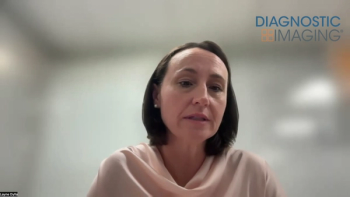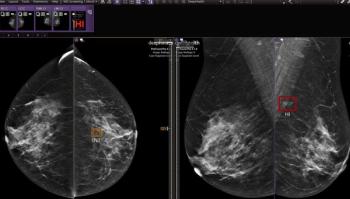
House panel chairs ask accountability office to probe imaging self-referral
At the request of the American College of Radiology, House Energy and Commerce chair Rep. Henry Waxman (D-CA), Ways & Means Committee chair Rep. Sandy Levin (D-MI), and Ways & Means Subcommittee on Health chair Rep. Pete Stark (D-CA) have called on the General Accountability Office to perform a study regarding the effects of physician self-referral of advanced medical imaging and radiation therapy treatments on Medicare spending.
At the request of the American College of Radiology, House Energy and Commerce chair Rep. Henry Waxman (D-CA), Ways & Means Committee chair Rep. Sandy Levin (D-MI), and Ways & Means Subcommittee on Health chair Rep. Pete Stark (D-CA) have called on the General Accountability Office to perform a study regarding the effects of physician self-referral of advanced medical imaging and radiation therapy treatments on Medicare spending.
The
Overall, appropriate use of imaging and radiation therapy treatments can be addressed by wider adoption of ACR Appropriateness Criteria, which help physicians prescribe the most appropriate imaging exam or radiation therapy procedure for a given clinical condition, and computerized physician ordering systems based on these criteria. In addition, accreditation of imaging facilities, to be mandated for nonhospital providers under Medicare, effective Jan. 1, 2012, should be
However, government regulation needs to address financially driven self-referral, which may not be rectified by quality measures. Congress and the regulatory agencies must do so by measures other than across-the-board reimbursement cuts, which only encourage more self-referral and restrict patient access to quality care by driving those who do not self-refer out of practice or forcing them to limit the number of Medicare patients they accept.
MRI, CT, PET, and radiation therapy procedures are not ancillary services. The Centers for Medicare and Medicaid Services should remove them from the “in-office ancillary exception” to federal law, which allows providers to directly profit financially from referring patients to scanners or radiation therapy equipment which they own.
CMS should clamp down on leasing arrangements. Currently, nonradiologists can lease time in an imaging center and claim that the center is thus part of their practice. By doing this, they can refer patients to be scanned in that center during the time they have leased. This creates a direct financial incentive to do more imaging, which studies have shown significantly increases the number of scans performed.
Elected officials, government agency staff, and referring physicians need to support these steps to eliminate financially driven self-referral and make sure that every patient receives the right scan or treatment, at the right time, for the right indication.
Newsletter
Stay at the forefront of radiology with the Diagnostic Imaging newsletter, delivering the latest news, clinical insights, and imaging advancements for today’s radiologists.


























